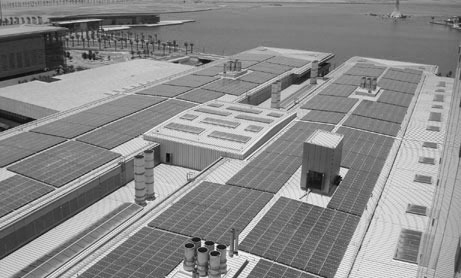Solar Roof Panels
Solar technology has grown by leaps and bounds in recent decades. Solar roof systems can now supply more than 25 percent of a building’s total energy, making solar technology an attractive option for owners looking to cut energy costs.
Using solar panels with a reflective, white roof system generates even more power, increasing energy savings. Solar systems perform better on reflective roofs due to low ambient temperatures, which reduce building cooling requirements by lowering the temperature of the roof and the building underneath.
No matter the style of roof, Whitco can provide a solar solution that makes sense for your project and business. There is not one solar roofing system that is right for every project, so Whitco tailors the design and scope of a solar system to fit each individual roof Whitco builds. Whether your roof is low slope, curved, multi-pitched, or domed, Whitco’s Energy Management team has a solution that will meet your needs.
![]()
Capabilities of Solar Roof Systems
According to documented case studies, many solar investments see a 100 percent return in less than 5 years. This depends on several variables, including the size of the roof (the bigger the surface area, the more solar panels for converting energy), sun intensity, average cloud cover, and temperature. A solar roof installation will provide years of cost savings and can continue to generate returns on the initial investment. Many of the solar panels Whitco installs have a limited power warranty of up to 25 years.
Federal, state and local tax credits and rebates can help offset the cost of installing a solar power system substantially. Some states even allow excess energy to be sold back to utility companies. Contact Whitco for more information about rebates in your area.
![]()
Solar Panel Case Study
A recent case study of a warehouse with 7,000 solar panels, each comprising 40 individual modules, had a nominal power rating of 1.28MWp. This solar system covered 72 percent of the roof’s surface and produced 1360 MWh per year of photovoltaic electricity. According to the Environmental Protection Agency, that amount of energy could power 600 individual households. In this case study, the solar roof installation was projected to supply 25 percent of the building’s total energy and reduce cooling costs by 20 percent. You can read more about this case study here:
Download Case Study

